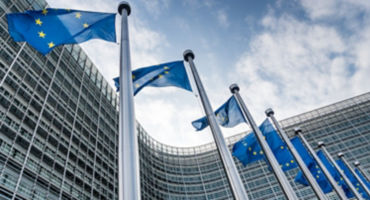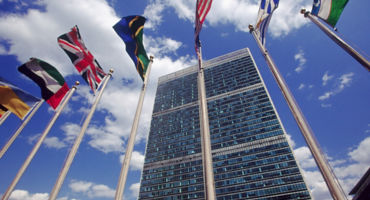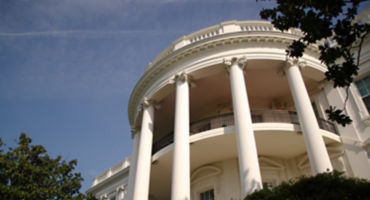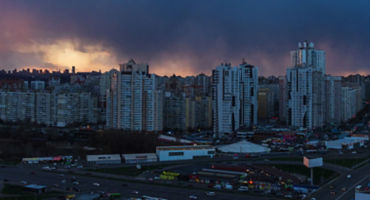Skip to main content
- Funds
- Capabilities
- Insights
- About Us
Asset classes
The views expressed are those of the author at the time of writing. Other teams may hold different views and make different investment decisions. The value of your investment may become worth more or less than at the time of original investment. While any third-party data used is considered reliable, its accuracy is not guaranteed.
With commodity inventories at multi-decade lows, is rising cross-asset-class volatility inevitable? I believe the tragic Russia/Ukraine crisis demonstrates why the answer is likely yes.
Recently, experts from across our investment platform went back and forth about the Russia/Ukraine crisis. During that debate, Global Industry Analyst Tim Casaletto made a point that reflects the wide-reaching investment implications of the conflict:
“The current situation strengthens the long-term growth outlook of renewables in Europe. This is because: (a) the more wind/solar power Europe has, the less dependence it will have on Russian gas imports; and (b) the cost to build new renewables in Europe is far lower than the current power prices we’re seeing…To put numbers to this, it costs roughly €40/MWh on average to build new wind/solar in Europe versus current European power prices that are closer to €150 to €200/MWh, depending on the country."1
As has been discussed by many pundits and politicians — including former US Secretary of State Condoleezza Rice in a recent call with Wellington investors — the Russia/Ukraine situation is tied to gas prices in Europe. Russia supplies roughly 35% of Europe’s natural gas.2 Record-high prices have been driven by record-low storage volumes. And “without increased gas flows from Russia, next winter becomes extremely problematic and a true [European] energy crisis would appear unavoidable,” as Equity Analyst Jordan McNiven noted. This Russian leverage is likely central to why the Putin government has identified now as the time to violently escalate its geostrategic push to cultivate “buffer states.”
In recent months, we have written often about the cyclical and structural reasons to believe today’s commodity supply shortfalls will persist. The COVID pandemic continues to disrupt production and distribution. Producer discipline and underinvestment is restraining the supply response. And with decarbonization ambitions intensifying globally, production costs are likely to inflate, limiting new projects and, therefore, exacerbating supply/demand imbalances.
The Russia/Ukraine conflict is a vivid demonstration of the broad and potentially seismic implications of low commodity inventories. Constrained commodity supplies could determine the direction of everything from central bank policy to decarbonization to globalization and the future of great-power competition. In turn, I believe it is essential that all capital allocators contemplate how we got here and where we could be headed.
Since the spring of 2020, commodity inventories have been drawing down at a near-record rate. Figure 1 shows the 12-month change in aggregate commodity inventories. Given this rapid depletion, “inventories are [now] the lowest I have on record going back to at least 1990,” as Commodities Portfolio Manager David Chang noted in a recent webinar discussing inflation.
This disconnect between commodity supply and demand was likely foreseeable. The metals/mining sector illustrates this story. A telling chart (Figure 2) from Global Industry Analyst Andrew Byrne shows the production output of large-cap global miners, indexed to 2010, versus real global GDP. Byrne encapsulated the significance as follows:
“The mining sector has been ex-growth since 2015…To put it simply, global demand for metals is growing and compounding on the back of population and GDP growth, urbanization, and decarbonization. Supply is not growing and may not grow meaningfully this decade.”
Recently, a metals trading giant issued a stark warning about aluminum: “The deficit is now moving at such a speed that it’s unsolvable…the world will run out of stockpiles by early 2024,” as Bloomberg reported. Aluminum prices have more than doubled since the first 2020 COVID shutdowns and now sit near a 13-year high. 2
And demand for aluminum looks poised to continue to spike. Just consider the decarbonization targets set by the new German government coalition, which aim to make renewables 80% of the nation’s energy mix by 2030, up from 45% today.1 As Tim Casaletto has calculated, this would require roughly 25 gigawatts (GW) of new renewables per year. And just one GW of new solar panel capacity requires more than 10,000 tons of aluminum, according to Bloomberg calculations.2
Commodity supplies are likely to be further complicated by climate change itself. Coffee, for example, has given a glimpse of this potential. Over the past year, coffee prices have nearly doubled.2 Two years of extreme drought have compromised Brazilian growing seasons. Based on coffee growers monitored by the ICE Futures US Exchange, Brazilian stockpiles appear to be the lowest they’ve been in over 20 years. As climate change intensifies, we expect more frequent and more severe disruptions to commodity production and distribution, generating even greater volatility in supply/demand imbalances.
As the Russia/Ukraine crisis exemplifies, a world of tight and uncertain commodity supplies is likely a world of heightened volatility. And the sustainability revolution is poised to only exacerbate inflationary pressures — constraining supplies (via regulation and investor divestiture) faster than demand, especially as GDP growth rebounds post-pandemic. It is an environment where deep, research-driven active management could prove a defining edge. Recognizing (and exploiting) the company-by-company, market-by-market, and nation-by-nation implications of higher commodity prices will require diverse expertise and the ability to allocate with agility.
1 Source: Wellington Management estimates, Bloomberg, as of February 2022.
2 Source: Bloomberg, as of February 2022.

Oil: The real influencer in the Venezuela intervention
Multi-asset Strategist Nanette Abuhoff Jacobson details the role of oil in the recent events in Venezuela and shares the investment implications.

Fiscal versus tariffs: what wins out for Europe?
Just as investors were starting to explore the potential for growth in Europe, Trump’s tariffs landed. To what extent is the case for Europe still intact?

The US equity rotation: Where have all the good vibes gone?
After riding into 2025 on a wave of post-election euphoria, the US stock market has struggled to find its footing so far this year. Global Investment and Multi-Asset Strategist Nanette Abuhoff Jacobson looks at what’s changed in the markets and what it might mean for investors.

It’s different this time: Trump faces challenging geopolitical dynamics
Our expert explores how Trump may approach the heightened geopolitical challenges his second administration faces.

Four investment perspectives amid a pivotal US election
How can investors reposition portfolios for a pivotal but highly unpredictable US elections? Nick Samouilhan explores potential avenues in conversation with three leading portfolio managers.

Harris vs Trump: The foreign policy and investment implications
Our expert examines expected Harris and Trump foreign policies and their potential impact on the investment landscape.


URL References
Related Insights
Past results are not necessarily indicative of future results and an investment can lose value. Funds returns are shown net of fees. Source: Wellington Management
© 2025 Morningstar, Inc. All Rights Reserved. The information contained herein: (1) is proprietary to Morningstar; (2) may not be copied or distributed; and (3) is not warranted to be accurate, complete or timely. Neither Morningstar nor its content providers are responsible for any damages or losses arising from any use of this information. The Overall Morningstar Rating for a fund is derived from a weighted average of the three, five, and ten year (if applicable) ratings, based on risk-adjusted return. Past performance is no guarantee of future results.
The content within this page is issued by Wellington Management Singapore Pte Ltd (UEN: 201415544E) (WMS). This advertisement or publication has not been reviewed by the Monetary Authority of Singapore. Information contained on this website is provided for information purposes and does not constitute financial advice or recommendation in any security including but not limited to, share in the funds and is prepared without regard to the specific objectives, financial situation or needs of any particular person.
Investment in the funds described on this website carries a substantial degree of risk and places an investor’s capital at risk. The price and value of investments is not guaranteed. The value of the shares of the funds and the income accruing to them, if any, and may fall or rise. An investor may not get back the original amount invested and an investor may lose all of their investment. Investment in the funds described on this website is not suitable for all investors. Investors should read the prospectus and the Product Highlights Sheet of the respective fund and seek financial advice before deciding whether to purchase shares in any fund. Past performance or any economic trends or forecast, are not necessarily indicative of future performance. Some of the funds described on this website may use or invest in financial derivative instruments for portfolio management and hedging purposes. Investments in the funds are subject to investment risks, including the possible loss of the principal amount invested. None of the funds listed on this website guarantees distributions and distributions may fluctuate and may be paid out of capital. Past distributions are not necessarily indicative of future trends, which may be lower. Please note that payment of distributions out of capital effectively amounts to a return or withdrawal of the principal amount invested or of net capital gains attributable to that principal amount. Actual distribution of income, net capital gains and/or capital will be at the manager’s absolute discretion. Payments on dividends may result in a reduction of NAV per share of the funds. The preceding paragraph is only applicable if the fund intends to pay dividends/ distributions. Performance with preliminary charge (sales charge) is calculated on a NAV to NAV basis, net of 5% preliminary charge (initial sales charge). Unless stated otherwise data is as at previous month end.
Subscriptions may only be made on the basis of the latest prospectus and Product Highlights Sheet, and they can be obtained from WMS or fund distributors upon request.
This material may not be reproduced or distributed, in whole or in part, without the express written consent of Wellington Management.